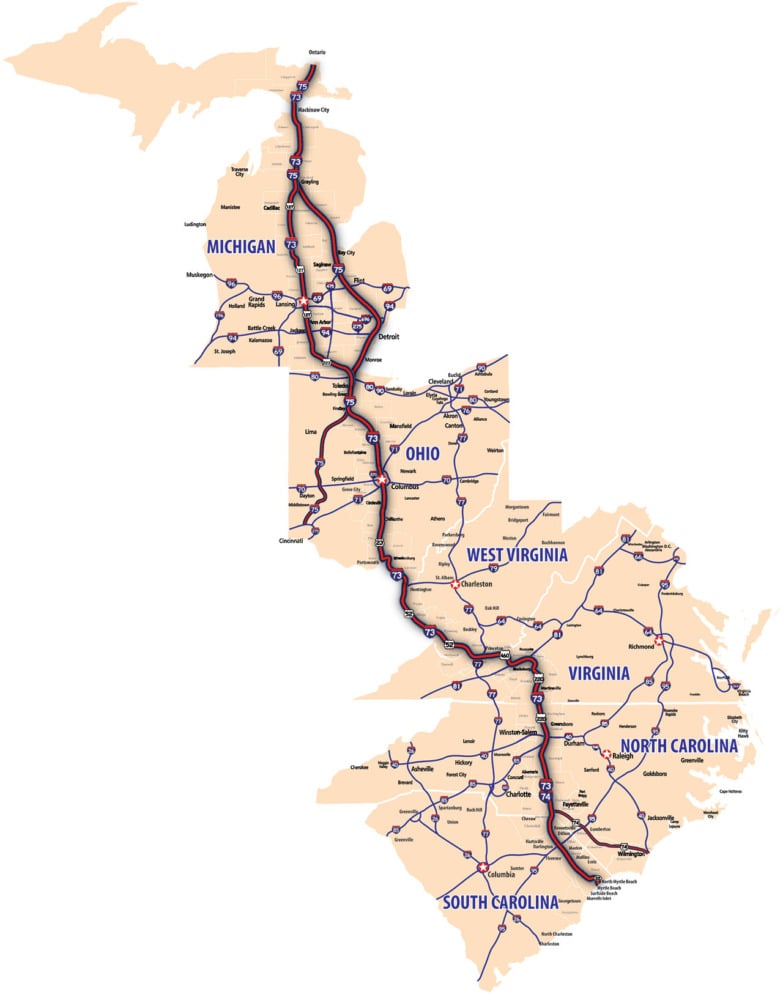Earlier this month, my husband and I made the trek down to Surfside Beach, South Carolina. It was 10+ hours, an upsetting amount of McDonald’s Diet Cokes, and about 4 different podcasts. If you’ve ever made the trip from Central Ohio down to the Myrtle Beach area, you know it’s a long one, with more than a few stretches that feel like they were designed to test your patience.
Now imagine shaving hours off the drive — and, at the same time, fixing some of the most frustrating traffic choke points in Ohio. That’s the promise (or at least the pitch) behind the proposed Interstate 73-74-75 corridor, a nearly 1,000-mile project that’s been in the works, on paper at least, for decades.
The highway would run from Michigan’s Upper Peninsula all the way to Myrtle Beach, following a path through Ohio, West Virginia, Virginia, and North Carolina before hitting the South Carolina coast.

Ohio’s piece would mostly follow U.S. 23, from Toledo, through Columbus, down to the southern tip of the state, but with some big upgrades. In Delaware County, that could mean finally bypassing the 20-mile stretch of U.S. 23 with nearly 40 stoplights. (If you’ve ever tried to make a straight shot from Columbus to Toledo, you know exactly how painful that is.)
Supporters say it’s not just about vacation traffic.
Rural communities in southern Ohio see it as a lifeline for economic development. Leaders in Pickaway and Scioto counties point to new manufacturing projects, defense companies, and an aging road network that makes attracting new jobs nearly impossible. For them, the interstate isn’t just convenient, it’s survival.
But this is not a shovel-in-the-ground situation yet. ODOT is spending $1.5 million on a feasibility study that won’t wrap until 2026. The whole project would require coordinated construction and funding from six states, plus federal buy-in.
South Carolina has its segment “shovel-ready” and even passed a local sales tax to help pay for it. Ohio? We’re still figuring out the details.
So for now, Myrtle Beach is still 10-ish hours away. But if the stars, the budgets, and the traffic engineers all align, one day your beach playlist might not have to last quite so long.




